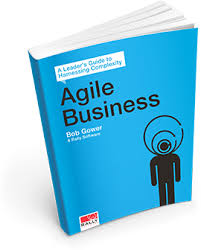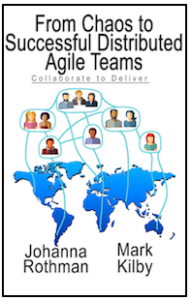I’ve been swamped since the Agile2013 conference, but wanted to share an answer to a recent question:
 “How does Agile and Lean thinking contribute to help organisations become learning organisations?”
“How does Agile and Lean thinking contribute to help organisations become learning organisations?”
What is typically behind this question is this: “We’ve been successful with agile on our teams. Is there something more we can do? Can we transform the organization to be even better?” This is exactly the path of an agile transformation. But what many don’t realize is that there are three transformations. This is described by the mastery concept of Shu-Ha-Ri that originally comes from martial arts, but has also become popular among agilists. I find it applies to organizations as well as individuals.
The first transformation is adopting the mechanics of agile. This would be the Shu step. For a team, this might be adopting all the practices of Scrum and XP. For an organization, this would be adopting something like the Scaled Agile Framework. (Yes, SAFe is a beginning step and not an ending in an agile journey). An organization emerges from this step when they are able to successfully execute the agile processes and they are seeing improvements in their products and services.
In the Ha phase, the organization is starting to “break the rules”. They start to see where basic Scrum, XP, or SAFe actually starts to limit them. They need to do something else to move faster. To make this step, they start to pay more attention to agile principles and values and use them to guide the practices they change. They start to respond even faster and with more precision as a business. It’s also at this phase that I find that agile goes out of engineering and starts to impact other parts of the organization: sales, marketing, HR, customer support and beyond.
In the Ri phase, the organization “leaves the rules” as it completely sheds it’s old way of operating and becomes completely agile. Parts of the organization shift and change to rapidly address growing business needs. Sometimes, new parts of the organization will emerge as “experiments” to address new opportunities. If they meet the opportunity, the new group will morph further to stabilize. If not, the new group will be absorbed by the existing groups. People are not cut because they represent critical learning from the organizational experiment. From outside the organization, they seem to move ahead of the market. They can anticipate the moves.
It’s difficult to imagine how this can work without seeing it. One way is to read the experiences of other organizations. Yves Hanoulle just posted some books that describe organizations that have gone through similar transformations. I wanted to point out another: Rally’s new book on Agile Business. I joined Rally in 2008 as they were deep in the Ha phase and moved into Ri around 2010-2011. They were also guiding other organisation on similar paths. The book describes some of this journey. Better yet, it paints a vision of what is possible. The book itself was written collaboratively by over 20 Rally employees which included marketing, sales, and HR as well as agile coaches and engineers. It tells stories of how Rally and it’s clients have moved to more agile and lean businesses. There is also an extensive set of references that provide more of the “how”. I hope it paints a vision for your Shu-Ha-Ri journey.
